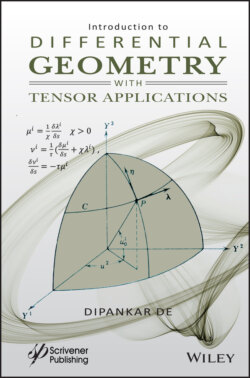Читать книгу Introduction to Differential Geometry with Tensor Applications - Группа авторов - Страница 10
Оглавление
Preface
Differential Geometry is the study of geometric properties of curves and surfaces and their higher dimensional analogues using the methods of tensor calculus. It has a long and rich history and, in addition to its intrinsic mathematical value and important connections with various other branches of mathematics, it has many applications in various physical sciences. Differential Geometry is a vast subject. A comprehensive introduction would require prerequisites in several related subjects. In this elementary introductory course, we discuss tensor calculus and its applications in details and many of the basic concepts of Differential Geometry in the simpler context of curves and surfaces in ordinary 3-dimensional Euclidean spaces. Our aim is to build both solid mathematical understanding of the fundamental notions of Differential Geometry and sufficient visual and geometric intuition of the subject.
We hope that this study is in the interest of researchers from a variety of mathematics, science, and engineering backgrounds and that Master level students will also be able to readily study more advanced concepts, such as properties of curves and surfaces, geometry of abstract manifolds, tensor analysis, and general relativity.
This book has three parts. The first part contains six chapters dealing with the calculus of tensors. In the first chapter, we deal with some preliminaries necessary for treatment of the materials in the succeeding chapters. In the second and third chapters, we discuss the algebra of tensors and metric tensors. Tensor calculus with Christoffel’s symbols and Riemannian Geometry are dealt with in the remaining chapters of this section. Part II contains six chapters discussing the applications of tensor calculus to geometry, mainly curves and surfaces in three-dimensional Euclidean space. The remaining two chapters in Part III mainly study Analytical Mechanics with tensor notation. At the end of each chapter, a large number of problems have been completely solved and exercises containing carefully motivated examples have been incorporated.
I would like to thank Professor Dr. Hanaa Hachimi and Dr. G. Suseedhran who gave me the scope and encouragement, with technical support, to write this book. I am also thankful to Professor Arindam Bhattacherya from Jadavpur University, India for offering some valuable suggestions for the improvement of this book.
Lastly, I wish to record my appreciation to the publishers and printers for their care and effort in bringing out this study in book form.
Dr. Dipankar De
Agartala, India
20th April 2021
